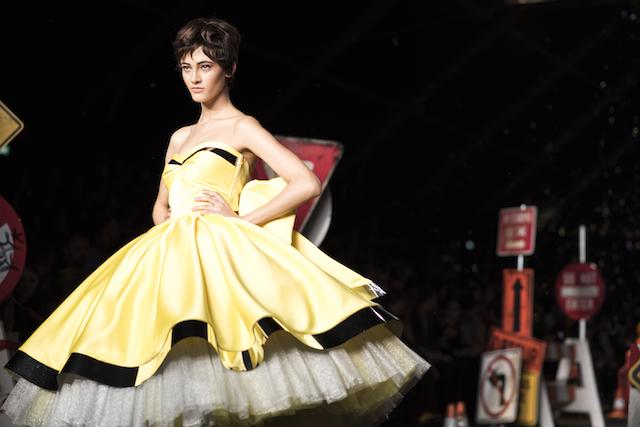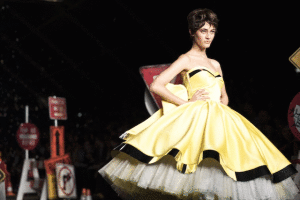An argument for the ages: fashion is necessary
November 17, 2015
In her review of London Fashion Week Fall/Winter 2015, Vanessa Friedman of the New York Times wrote, “Fashion, after all, is by definition unnecessary.” Though this phrase is from a piece that actually supported the extravagance of the London shows, the term, “unnecessary,” lead fashion enthusiasts including the Man Repeller’s Leandra Medine to respond in defense by deeming fashion necessary and a “crutch of survival.”
To say that fashion is “by definition unnecessary” is by definition untrue. Merriam-Webster defines fashion as “a prevailing custom, usage or style.” It is difficult to call fashion unnecessary when it is a part of everyone’s lives in one way or another. As long as people have worn clothing, there has always been fashion. We could call the loincloths that cavemen wore the fashion of their time, and as technology and social developments took place, fashions changed and progressed as well.
Fashion is essential to our survival in the practical sense. You have fashion to turn to when you step out into a single-digit temperature this winter. Thanks to fashion, you have a warm coat to shield you and boots that withstand the icy streets. Additionally, fashion is an intrinsic part of clothing; for it is nearly impossible to wear something isolated from some style of “fashion.” No matter your feelings toward fashion, there is always a choice of which coat or boots to buy. Whether you’re choosing between a utilitarian black peacoat or a fuzzy pink shearling jacket, that unavoidable choice means you must make a fashion decision.
A McQueen collection or a Birkin bag is as integral to contemporary art and culture as is a Monet painting, a Beatles song or an Alfred Hitchcock film. Questioning the high price of one of these pieces does not treat it as such, for fashion is art. Huffington Post writer Katherine LaGrave wrote on this sentiment.
“In the same way that most people who admire a Picasso will never be able to buy one, the majority of people who pine for an iconic Chanel suit will never feel that wool against their skin,” LaGrave said.
In her online piece, Medine argues that like art, fashion is a place where many people find solace. She quotes Diana Vreeland, who said, “Fashion must be an intoxicating release from the banality of the world.” As depressing as it is, the world can be dark or sad or simply boring, and many use fashion as a way to cope.
“If fashion might actually convince you that there is no end point, there is no darkness and that life runs in an ongoing loop littered by rose-colored fancies, it cannot be deemed unnecessary,” Medine said.
With their element of sublimity, fashion and art are essential for our social survival. They are a defense mechanism against the hardships that life so inevitably faces us with. What happens behind closed doors can be hidden from the world with the right outfit, helping you rise above adversity through abstract qualities of expression. Miuccia Prada spoke to New York Magazine, emphasizing fashion’s transcendent nature.
“[Fashion] is one of the first things you do to elevate yourself,” Prada said.
As much as fashion can protect us from frostbite or sunburn, its creative beauty as an artistic outlet protects us from the banality and harshness of the world. A handbag or a favorite pair of shoes keeps us moving forward, even when everything else tries to hold us back.
Email Natalia Barr at [email protected].


























































































































































